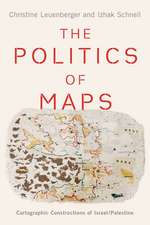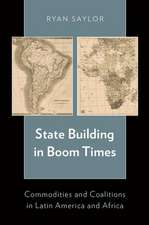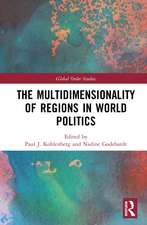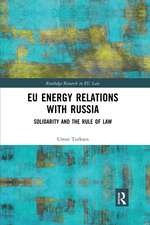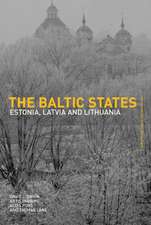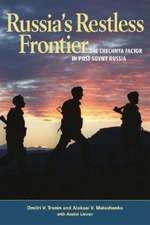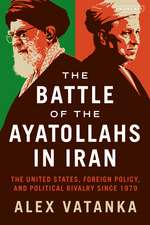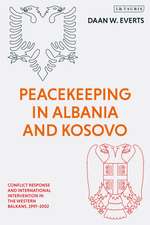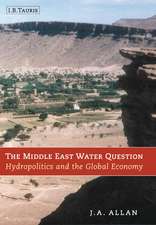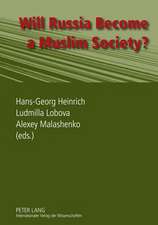The Fight for Influence: Russia in Central Asia
Autor Alexey Malashenkoen Limba Engleză Paperback – 10 dec 2013
Russian influence in Central Asia is waning. Since attaining independence, Kazakhstan, Kyrgyzstan, Tajikistan, Turkmenistan, and Uzbekistan have forged their own paths—building relationships with outside powers and throwing off the last vestiges of Soviet domination. But in many ways, Moscow still sees Central Asia through the lens of the Soviet Union, and it struggles to redefine Russian relations with the region.
In The Fight for Influence, Alexey Malashenko offers a comprehensive analysis of Russian policies and prospects in Central Asia. It is clear that Russian policy in the formerly Soviet-controlled region is entering uncharted territory. But does Moscow understand the fundamental shifts under way? Malashenko argues that it is time for Russia to rethink its approach to Central Asia.
Contents 1. Wasted Opportunities 2. Regional Instruments of Influence 3. Russia and Islam in Central Asia: Problems of Migration 4. Kazakhstan and Its Neighborhood 5. Kyrgyzstan—The Exception 6. Tajikistan: Authoritarian, Fragile, and Facing Difficult Challenges 7. Turkmenistan: No Longer Exotic, But Still Authoritarian 8. Uzbekistan: Is There a Potential for Change? Conclusion Who Challenges Russia in Central Asia?
In The Fight for Influence, Alexey Malashenko offers a comprehensive analysis of Russian policies and prospects in Central Asia. It is clear that Russian policy in the formerly Soviet-controlled region is entering uncharted territory. But does Moscow understand the fundamental shifts under way? Malashenko argues that it is time for Russia to rethink its approach to Central Asia.
Contents 1. Wasted Opportunities 2. Regional Instruments of Influence 3. Russia and Islam in Central Asia: Problems of Migration 4. Kazakhstan and Its Neighborhood 5. Kyrgyzstan—The Exception 6. Tajikistan: Authoritarian, Fragile, and Facing Difficult Challenges 7. Turkmenistan: No Longer Exotic, But Still Authoritarian 8. Uzbekistan: Is There a Potential for Change? Conclusion Who Challenges Russia in Central Asia?
Preț: 116.91 lei
Nou
Puncte Express: 175
Preț estimativ în valută:
22.38€ • 23.06$ • 18.89£
22.38€ • 23.06$ • 18.89£
Carte disponibilă
Livrare economică 10-24 februarie
Preluare comenzi: 021 569.72.76
Specificații
ISBN-13: 9780870034114
ISBN-10: 0870034111
Pagini: 284
Ilustrații: colour illustrations, maps
Dimensiuni: 152 x 229 x 17 mm
Greutate: 0.49 kg
Editura: Brookings Institution Press
Colecția Carnegie Endowment for Int'l Peace
ISBN-10: 0870034111
Pagini: 284
Ilustrații: colour illustrations, maps
Dimensiuni: 152 x 229 x 17 mm
Greutate: 0.49 kg
Editura: Brookings Institution Press
Colecția Carnegie Endowment for Int'l Peace
Descriere
Russian influence in Central Asia is waning. Since attaining independence, Kazakhstan, Kyrgyzstan, Tajikistan, Turkmenistan, and Uzbekistan have forged their own paths—building relationships with outside powers and throwing off the last vestiges of Soviet domination. But in many ways, Moscow still sees Central Asia through the lens of the Soviet Union, and it struggles to redefine Russian relations with the region.
In The Fight for Influence, Alexey Malashenko offers a comprehensive analysis of Russian policies and prospects in Central Asia. It is clear that Russian policy in the formerly Soviet-controlled region is entering uncharted territory. But does Moscow understand the fundamental shifts under way? Malashenko argues that it is time for Russia to rethink its approach to Central Asia.
Contents 1. Wasted Opportunities 2. Regional Instruments of Influence 3. Russia and Islam in Central Asia: Problems of Migration 4. Kazakhstan and Its Neighborhood 5. Kyrgyzstan—The Exception 6. Tajikistan: Authoritarian, Fragile, and Facing Difficult Challenges 7. Turkmenistan: No Longer Exotic, But Still Authoritarian 8. Uzbekistan: Is There a Potential for Change? Conclusion Who Challenges Russia in Central Asia?
In The Fight for Influence, Alexey Malashenko offers a comprehensive analysis of Russian policies and prospects in Central Asia. It is clear that Russian policy in the formerly Soviet-controlled region is entering uncharted territory. But does Moscow understand the fundamental shifts under way? Malashenko argues that it is time for Russia to rethink its approach to Central Asia.
Contents 1. Wasted Opportunities 2. Regional Instruments of Influence 3. Russia and Islam in Central Asia: Problems of Migration 4. Kazakhstan and Its Neighborhood 5. Kyrgyzstan—The Exception 6. Tajikistan: Authoritarian, Fragile, and Facing Difficult Challenges 7. Turkmenistan: No Longer Exotic, But Still Authoritarian 8. Uzbekistan: Is There a Potential for Change? Conclusion Who Challenges Russia in Central Asia?

